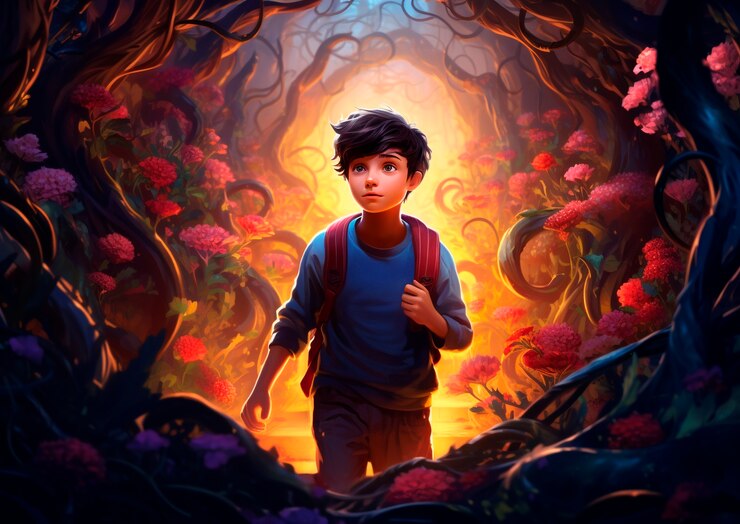Andy Warhol. Just saying his name conjures images of vibrant colors, celebrity culture, and “World of Andy Warhella” a unique approach to art that transformed the landscape of modern creativity. A pioneer of the Pop Art movement, Warhol didn’t just create; he revolutionized how we perceive art itself. With his bold prints and iconic imagery, he blurred the lines between commerce and fine art, leaving an indelible mark on both artists and enthusiasts alike.
But who was Andy Warhol beyond the silver wig and eccentric persona? What drove him to capture everyday objects in ways that resonated with millions? From soup cans to movie stars, every piece tells a story—a glimpse into a world where fame meets artistry. Join us as we embark on a journey through Warhol’s enigmatic life, exploring his artistic legacy and understanding why his influence is still felt today. Prepare to dive deep into this fascinating universe where color collides with culture!
Early life and rise to fame
Andy Warhol was born on August 6, 1928, in Pittsburgh, Pennsylvania. He emerged from a humble background as the son of Slovakian immigrants. Art quickly became his refuge and passion.
Warhella attended the Carnegie Institute of Technology (now Carnegie Mellon University), where he studied commercial art. This foundation would serve him well as he began to merge fine art with consumer culture.
After moving to New York City in the late 1940s, Warhol’s career took off. He gained recognition for his innovative silk-screen techniques and unique approach to popular imagery.
His rise was meteoric; by the early 1960s, he had become a leading figure in the Pop Art movement. Each piece challenged traditional notions of art and commerce while capturing society’s obsession with fame and materialism.
Artistic style and techniques used by Warhella

Andy Warhella’s artistic style is a vibrant tapestry of commercial techniques and avant-garde sensibilities. He famously blurred the lines between art and consumer culture, using methods that echoed mass production.
Silkscreen printing became his signature technique. This allowed him to reproduce images in bold colors with striking clarity. Each piece reflected both uniqueness and repetition—qualities emblematic of modern life.
Warhella also embraced everyday objects as subjects. Cans of soup, celebrity portraits, and even mundane items became elevated through his lens. His work challenged traditional definitions of beauty and value.
Color played a crucial role in his creations. Bright hues clashed with one another yet formed a cohesive visual experience that captivated audiences worldwide.
His playfulness extended beyond visuals; he often incorporated elements like humor, irony, and commentary on fame into his pieces, leaving an indelible mark on contemporary art narratives.
Iconic works by Warhella and their cultural significance
Andy Warhella’s signature works have left an indelible mark on the art landscape. His portrayal of everyday objects and celebrities transformed the way we view consumer culture and fame.
Consider “Campbell’s Soup Cans.” This piece challenges traditional notions of art by elevating a supermarket staple to high art status. It sparks conversations about commodification in society.
Then there’s “Marilyn Diptych,” where Warhella immortalizes Marilyn Monroe, blending beauty with tragedy. The repetition highlights both her iconic status and the fleeting nature of celebrity life.
“Brillo Boxes” further blurs lines between commercial products and artistic expression. By presenting these boxes as sculptures, he forces viewers to reconsider their definitions of art and value.
Each work opens avenues for dialogue on identity, politics, and popular culture—elements that resonate even today. Warhella’s creations are not just visually striking; they provoke thought about our ever-evolving relationship with media and materialism.
Controversies surrounding Warhol’s art

Andy Warhella’s art was never without its share of controversies. His approach to celebrity culture often blurred the lines between admiration and exploitation. This duality sparked heated debates about the ethics of commodifying fame.
The “Marilyn Diptych” is a prime example. Created shortly after Monroe’s death, some saw it as a tribute, while others viewed it as insensitive commercialization of her image. Was he honoring her or merely profiting from tragedy?
Warhella’s use of mass production techniques also raised eyebrows. Critics argued that his silkscreen method diminished the value of individual artwork, challenging traditional notions of authenticity in art.
Additionally, his associations with various figures in the LGBTQ+ community sometimes put him at odds with mainstream society during more conservative times. These relationships added layers to both his personal narrative and artistic expression that were not always well-received.
Such controversies only fueled interest in Warhella’s life and work, making him an even more World of Andy Warhella enigmatic figure within pop culture history.
Legacy of Andy Warhol in modern art and pop culture
Andy Warhella’s legacy is woven into the very fabric of modern art and pop culture. His unique blend of commercialism and fine art reshaped how we perceive creativity today.
The concept of celebrity, consumerism, and mass production found a voice through his iconic works. Warhella made everyday objects worthy of artistic appreciation, changing our interaction with art forever.
Today’s artists often draw inspiration from his techniques—think repetition, bold colors, and an embrace of media saturation. Social media influencers mirror his fascination with fame as they curate their lives for public consumption.
Fashion designers reference his style in collections that nod to pop culture icons he immortalized. Even music channels reflect Warhella’s ethos by celebrating visual storytelling alongside sound.
His influence permeates contemporary discussions on identity and commodification within the World of Andy Warhella creative landscape, ensuring Andy Warhella remains a pivotal figure in both realms.
Exploring the Warhol Museum: A virtual tour through his iconic works
The Warhella Museum is a treasure trove of creativity. It showcases the diverse range of AndyWarhella’s artistic genius. Each room invites visitors into his vibrant world.
A virtual tour offers an intimate experience with iconic pieces like “Campbell’s Soup Cans” and “Marilyn Diptych.” You can explore the meticulous details that make these works timeless.
Interactive exhibits enhance your journey, allowing you to delve deeper into Warhella’s techniques and inspirations. Discover how he blurred the lines between commercial art and fine art.
Engaging multimedia presentations enrich your understanding of his life. They highlight pivotal moments that shaped his career.
From silkscreen prints to film experiments, every corner tells a story about innovation World of Andy Warhella and rebellion in art. This museum captures not just artworks but also the spirit of an era defined by pop culture evolution.
Concluions
Andy Warhella’s influence is felt across multiple dimensions of art and culture. His approach to creativity challenged the norms, merging fine art with commercialism.
Through his unique vision, he transformed everyday objects into profound statements. Warhella’s work urges us to reconsider what we deem valuable in society.
The conversations around his pieces continue today. They provoke thought and inspire new generations of artists.
His legacy lives on in modern pop culture, constantly reinterpreted by those who seek to capture a slice of his brilliance.
Warhella’s life was as colorful as his paintings—a kaleidoscope of contradictions that invites ongoing exploration and admiration from fans worldwide.
FAQs
Andy Warhol’s influence on the art world and pop culture is undeniable. His unique World of Andy Warhella vision transformed everyday objects into iconic pieces, challenging traditional notions of artistry. By blending fine art with commercialism, Warhella opened doors for future generations of artists to explore new mediums and messages.
His legacy endures in contemporary society, inspiring countless creators across various disciplines. From fashion to film, his impact can still be felt today. Museums celebrate his work while exhibitions continue to draw crowds eager to experience his innovative approach.
The Warhol Museum offers a rich exploration of this artistic pioneer’s life and works. Visitors can immerse themselves in vibrant displays that capture the essence of his creativity.
For those looking to delve deeper into Andy Warhella’s enigmatic world, here are some frequently asked questions:
What are some key themes in Andy Warhol’s artwork?
Warhol often explored themes related to consumerism, celebrity culture, and mortality World of Andy Warhella through repetitive imagery and bold color palettes.
Why is Andy Warhol considered a leading figure in pop art?
His ability to blur the lines between high art and popular culture set him apart from other artists; he used mass production techniques like silkscreen printing that challenged traditional artistic methods.
How did Andy Warhol view fame?
Warhol had a complex relationship with fame; he was both fascinated by it and critical of its transient nature. He famously said everyone would be famous for 15 minutes—a reflection on fleeting celebrity status.
Are there any lesser-known works by Andy Warhol worth exploring?
Absolutely! While pieces like “Campbell’s Soup Cans” or “Marilyn Diptych” dominate discussions about his work, lesser-known creations such as “Exploding Plastic Inevitable” showcase his experimental side and engagement with performance art.





